Themed collection Macronutrient Cycles

Macronutrient cycles: themed issue
Guest editors Jill Crossman and Paul G. Whitehead introduce this themed issue on macronutrient cycles.

Environ. Sci.: Processes Impacts, 2014,16, 1548-1550
https://doi.org/10.1039/C4EM90017K
The interaction of human microbial pathogens, particulate material and nutrients in estuarine environments and their impacts on recreational and shellfish waters
Review of the interaction of human microbial pathogens, nutrients and flocs from rivers to coasts.
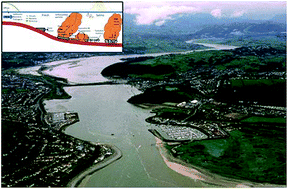
Environ. Sci.: Processes Impacts, 2014,16, 2145-2155
https://doi.org/10.1039/C4EM00031E
Phosphorus availability explains patterns in a productivity indicator in temperate semi-natural vegetation
Spatial variation in a trait-based indicator of plant productivity was mainly explained by an axis of variation from wet, organic soils to drier, mineral soils. However, extractable phosphorus explained residual variation considerably better than did mineralisable nitrogen.
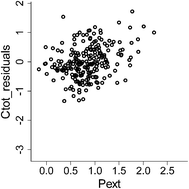
Environ. Sci.: Processes Impacts, 2014,16, 2156-2164
https://doi.org/10.1039/C4EM00312H
Understanding nutrient biogeochemistry in agricultural catchments: the challenge of appropriate monitoring frequencies
We evaluate different frequencies of riverine nutrient concentration measurement to interpret diffuse pollution in agricultural catchments.
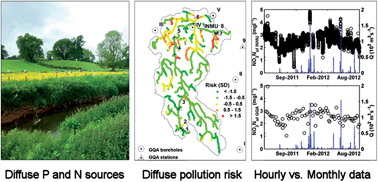
Environ. Sci.: Processes Impacts, 2014,16, 1676-1691
https://doi.org/10.1039/C4EM00100A
Recent trends in water quality in an agricultural catchment in Eastern Scotland: elucidating the roles of hydrology and land use
Lags in diffuse pollution response have been found to be important for trends in water quality in an agricultural catchment.
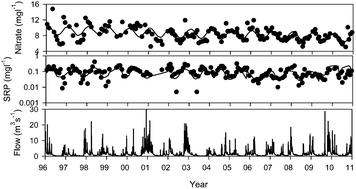
Environ. Sci.: Processes Impacts, 2014,16, 1659-1675
https://doi.org/10.1039/C3EM00698K
Denitrification potential of organic, forest and grassland soils in the Ribble-Wyre and Conwy River catchments, UK
Denitrification potential was significantly influenced by land use type where it was lower in organic and forest than in semi-improved and improved grassland soils.
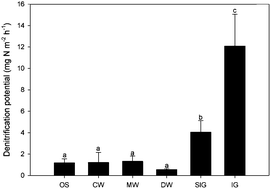
Environ. Sci.: Processes Impacts, 2014,16, 1551-1562
https://doi.org/10.1039/C3EM00693J
Reduced nutrient pollution in a rural stream following septic tank upgrade and installation of runoff retention measures
Combined measures for tackling micro-point source and diffuse pollution in rural landscapes show the potential for considerable improvements in surface water quality.
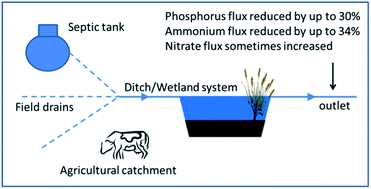
Environ. Sci.: Processes Impacts, 2014,16, 1637-1645
https://doi.org/10.1039/C3EM00681F
UK catchment nutrient loads 1993–2003, a new approach using harmonised monitoring scheme data: temporal changes, geographical distribution, limiting nutrients and loads to coastal waters
The work provides robust estimates of nutrient loads (nitrate and phosphate) from all UK catchments: as required by the Water Framework Directive to monitor catchments' health, and to inform management of these environments.

Environ. Sci.: Processes Impacts, 2014,16, 1646-1658
https://doi.org/10.1039/C4EM00021H
High frequency variability of environmental drivers determining benthic community dynamics in headwater streams
Headwater streams are an important feature of the landscape, with their diversity in chlorophyll-a and community structure a function of mean antecedent conditions.
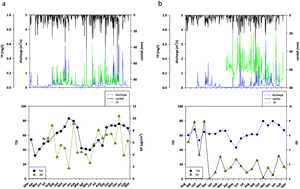
Environ. Sci.: Processes Impacts, 2014,16, 1629-1636
https://doi.org/10.1039/C3EM00680H
Developing Demonstration Test Catchments as a platform for transdisciplinary land management research in England and Wales
This paper describes a research platform approach that has been developed in England to bring together researchers and stakeholders from a wide range of institutions to undertake multi-disciplinary, catchment-scale research on approaches to tackle agricultural water pollution.
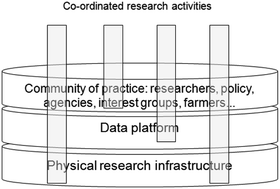
Environ. Sci.: Processes Impacts, 2014,16, 1618-1628
https://doi.org/10.1039/C3EM00658A
Application of a simple multiplicative spatio-temporal stream water quality model to the river Conwy, North Wales
A simple multiplicative spatio-temporal mixing model is used to simulate headwater catchment water quality data in the Conwy catchment.
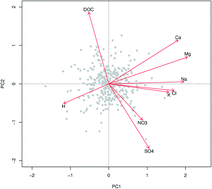
Environ. Sci.: Processes Impacts, 2014,16, 1600-1607
https://doi.org/10.1039/C3EM00627A
Atmospheric deposition of phosphorus to land and freshwater
Newly-obtained and published data on phosphorus deposition were evaluated to make a global budget, assess bioavailability and spatial and temporal variation, and consider which ecosystems might depend upon atmospheric inputs.
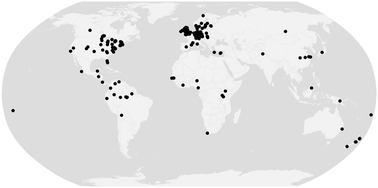
Environ. Sci.: Processes Impacts, 2014,16, 1608-1617
https://doi.org/10.1039/C3EM00641G
Modelling phosphorus loading and algal blooms in a Nordic agricultural catchment-lake system under changing land-use and climate
A network of process-based mass-balance models for phosphorus dynamics in catchments and lakes provides a new approach to simulate the effect of land-use and climate change on water quality.
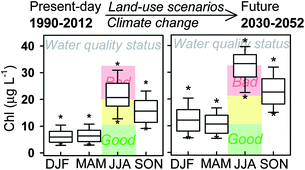
Environ. Sci.: Processes Impacts, 2014,16, 1588-1599
https://doi.org/10.1039/C3EM00630A
Temporal dynamics between cattle in-stream presence and suspended solids in a headwater catchment
High-resolution monitoring of cattle in-stream activity to quantify the impact on suspended solid concentrations, and contribution to water pollution from agriculture.
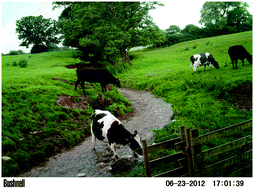
Environ. Sci.: Processes Impacts, 2014,16, 1570-1577
https://doi.org/10.1039/C3EM00686G
Personal nitrogen footprint tool for the United Kingdom
A nitrogen footprint calculator tool for the UK is described together with a historical and international comparison of N footprints. Scenarios show how reductions in individual footprints can be made.

Environ. Sci.: Processes Impacts, 2014,16, 1563-1569
https://doi.org/10.1039/C3EM00690E
Bayesian uncertainty assessment of a semi-distributed integrated catchment model of phosphorus transport
Bayesian parameter estimation on INCA-P highlights the importance of parameter uncertainty in simulating future scenarios.
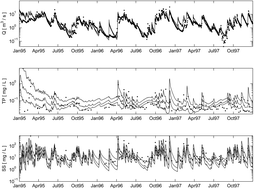
Environ. Sci.: Processes Impacts, 2014,16, 1578-1587
https://doi.org/10.1039/C3EM00619K
About this collection
Disturbance of the interactions, or cycles, of these macronutrients (N, P and C), has had significant environmental and economic implications including soil nutrient enrichment, eutrophication of surface waters, reduced air quality, and loss of drinking water quality. These issues pose a threat not just to biodiversity, but also to public water supplies and public health. The guest editors of this special issue form the directorate of the NERC Macronutrient Cycles Programme (see http://macronutrient-cycles.ouce.ox.ac.uk); Professor Paul Whitehead (Director) and Dr Jill Crossman (Assistant Director).